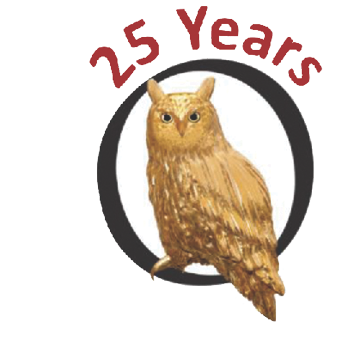
1. Claudia Hepner wrote about the history of Suffield on the Green in the July/August 2002 issue. What event precipitated it and in what year?
a. The last Firemen’s Carnival in 2014
b. The last fundraising picnic organized by St. Joseph’s Church to pay for its brick church in 1960
c. Suffield’s 300th anniversary celebration in 1970
2. Lester Smith visited Suffield Township for a few days surrounding Memorial Day in 2002. This town has a direct connection to our town as it was purchased in the eighteenth century by nine Suffield, Conn. investors for $12,903. What state is Suffield Township located in?
a. Pennsylvania
b. New York
c. Ohio
3. The John W. Ramsay Library is a free library near Suffield which has no paid staff, no budget and rarely purchases a book. Yet at the time it was written about by N.J. Hall in July/August 2002, its collection included 20,000 books, 96,000 periodicals, and 20,000 types of media. What is the subject matter of the library and where is it?
a. It is devoted to aviation and is at the New England Air Museum.
b. Its subject matter is fire technology, and it is at the Connecticut Fire Museum in East Windsor.
c. Its subject is the tobacco industry and is located at the Connecticut Valley Tobacco Museum in Windsor.
4. There were a lot of good news nuggets in the July/August 2002 issue, including an article on the 75th anniversary of the Suffield Country Club that Margery Warren wrote. Are all of these statements true?
a. The founders purchased 65 acres of George Harmon’s tobacco farmland.
b. It was always an 18-hole golf club.
c. In 1927, family memberships were $100 and men’s and women’s memberships were at $85 and $75, respectively.
5. Travel wasn’t easy in the days of the early automobile, wrote Lester Smith in September 2002. The roads were primitive and travel directions between and through towns were sketchy at best. What prompted the improvement in the condition and identification of the country roads?
a. The State of Connecticut
b. The automobile industry
c. Bicyclists
6. Smallpox was a much-feared disease in Suffield’s history. In a September 2002 article, Mary Anne Zak wrote that smallpox victims were placed in pesthouses. One of them was on Benjamin Gillett’s property at the foot of the mountain in a place called Under the Mountain. Another one belonged to Benjamin Sheldon who was paid four pence, probably per week, for housing 67 victims near the West Suffield Center.
Is the following sentence true or false: Suffield residents were inoculated against smallpox beginning in 1801.
7. The Village of Suffield, a special district in the center of town, was established in 1893, according to Lester Smith in September 2003. It brought electricity, streetlights, city water, fire protection and sidewalks and other enhancements. Building sidewalks comprised most of its activities. During its time, sidewalks eventually extended on most of the North and South Main Streets, some on Bridge Street and Mountain Road, and on one side of Day Avenue, High Street and Kent Avenue. During the early years, snow removal was also provided by the Village, although repairs to the sidewalks were split with the property owner. When the Village of Suffield was dissolved, property owners became fully responsible for snow removal and maintenance of the sidewalks. What year was that?
a. 1940
b. 1966
c. 1958
8. Writing about Suffield’s Irish heritage, in March 2004, Mary Anne Zak wrote that Timothy McMahon was the first documented Irishman in Suffield in 1827. What were his circumstances?
a. He was killed while building the canal in Windsor Locks. He didn’t live in Suffield but was buried here.
b. He was traveling through the town when his horse got injured. Unable to pay for a room, he started working in the local tavern for bed and board and decided to stay.
c. He was an indentured servant at the Gay Manse.
9. According to Lester Smith in March 2004, it is probable that wooden mile markers were placed in the 1700s, marking the road from Hartford through Suffield to Springfield. What year did Suffield place stones as mile markers from the Hartford Courthouse, now known as the Old State House?
a. 1796
b. 1812
c. 1833
10. Sam Fuller, the founder and first editor of the Suffield Observer was a hard act to follow, but Carol Martin and Mary Ann Muska succeeded him as co-editors of the paper in…
a. 2010
b. 2002
c. 2004
Answers:
1. c. Suffield’s 300th anniversary celebration was in 1970, but the event was switched to September instead of October. The event was originally called Octoberfest.
2. c. Ohio; the Township was originally part of Connecticut’s Western Reserve.
3. a. It is devoted to aviation and is located at the New England Air Museum.
4. Answers a. and c. are true, b. is not true. The club began as a 9-hole golf course, not an 18-hole one.
5. c. Bicyclists. Col. Albert A. Pope, the prominent Hartford bicycle manufacturer, organized the League of American Wheelmen in 1880. Dedicated bicyclists issued road maps and promoted highway improvements.
6. False. Alexander King recorded in 1776 that he was inoculated. In 1801, the Town voted against sanctioning inoculation.
7. c. 1958
8. a. He was killed while building the canal in Windsor Locks. He didn’t live in Suffield but was buried here. By the 1900 census, the Irish were the dominant ethnic group in town.
9. b. 1812
10. c. 2004